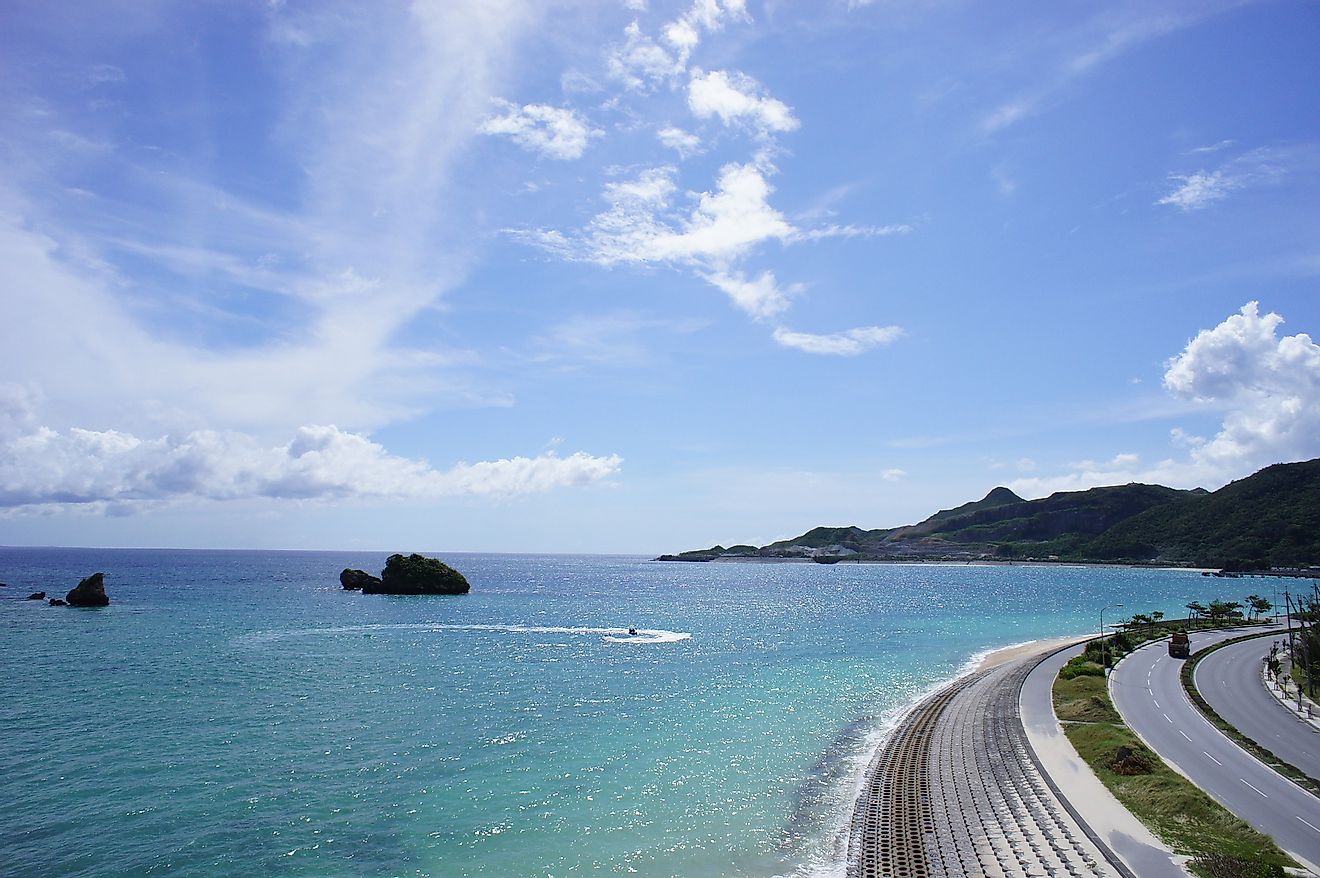Okinawa Island Of Japan

Okinawa Island is the largest of Japan’s Ryukyu Islands. This island chain, known in Japanese as the Nansei Islands, is situated approximately 640 km south of the rest of Japan and 500 km north of Taiwan. With an area of about 1,206.96 square km, Okinawa is home to over a million people. The majority of the island's citizens reside in its southern and central regions while the north is less populated. According to statistics from 2012, Naha, its capital city, has a population of 321,467 residents. Numerous land bridges connect Okinawa to its neighboring islands.
4. Historical Role
During World War II, Okinawa was the site of a gruesome and lengthy battle. The 82-day long land assault, fought between the American troops and members of the Imperial Japanese Army, was costly and resulted in a total of over 100,000 casualties. After the war, the US controlled Okinawa Island until 1972. Due to its strategic location, the Okinawa island has since played a significant role in US military operations in East Asia.Today Okinawa Island is home to 32 United States Armed Force bases and 48 training facilities. The number of American military personnel living on the island is estimated to be 26,000.
3. Modern Significance
Aside from the ongoing controversy surrounding the continued presence of US armed forces in Okinawa the island has also been in the news due to the extraordinary lifespan of its citizens. Okinawa is home to some of the longest living human beings on Earth. According to statistics, older residents of the island are much less likely to die from an array of age-related diseases such as cancer, stroke, heart disease, and dementia. Although many experts have speculated on the reasons for the lengthy lifespan of the island’s populace; citing factors such as a mainly vegetarian diet, genes, strong family bonds, and active lifestyles, the exact formula for longevity remains unknown
2. Habitat and Biodiversity
With its subtropical climate and relative isolation, Okinawa Island is home to rare animals including several endangered birds such as the Okinawa rail and woodpecker as well as the Bonin Flying Fox, a species of bat. The island’s habitat also includes an array of tropical snakes, deer, and monkeys. The landscape of Okinawa features large forested areas brimming with a variety of trees including the Matsu (pine) as well as the Sakura cherry blossom tree. As a tribute to one of Okinawa’s most important agricultural products, pineapples, the community of Nago is home to a unique theme park dedicated to the tropical fruit. Here tourists have the opportunity to visit gardens and pineapple fields as well as sample a wide array of pineapple products such as cakes, wine, and juice.
1. Environmental Threats and Territorial Disputes
Okinawa Island faces its share of environmental issues including deforestation and pollution. Over the years, vast tracts of natural vegetation have been cleared due to urbanization and development of resorts, military facilities, and housing developments. Other environmental problems include the introduction of non-native wildlife including creatures such as the Javan and Indian gray mongoose as well as the Siberian weasel. Although these animals were initially imported to help control the local snake population, the result has been significant losses in terms of native mammals and birds. Due to the island’s proximity to Taiwan, Okinawa has also been the subject of long-standing territorial disputes between the countries of Japan and China. There is also a growing movement among residents of Okinawa aimed at pressuring the US military to move its bases off the island.







